IndyCar Is Broken, Here's How To Fix It
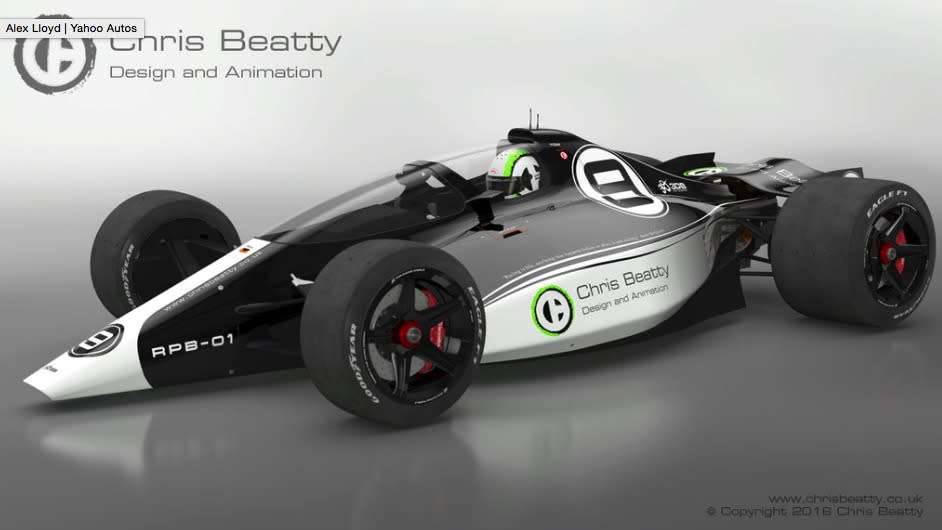
“Downforce” is the death of competitive racing. Those giant wings pushing the car onto the tarmac enable unfathomable cornering speeds, but the dirty air left trailing behind ensures following a big-winged openwheeler closely is almost impossible (think Maverick flying though Ice Man’s jet wash).
And so, close racing dies.
Preventing mortality is simple: Remove the wings (or make them drastically smaller)—like we see here in this concept from British designer Chris Beatty, taking inspiration from the 1960s and early ‘70s Formula One and IndyCars.
A design like this will never happen in F1; the series is on a mission to make its cars five seconds a lap faster for 2017. To achieve that, the menu includes an increase in downforce, something most of the drivers strongly oppose. But Formula One is a technology race, and the cars must remain the fastest on the planet. Going back in time doesn’t fit with its character.
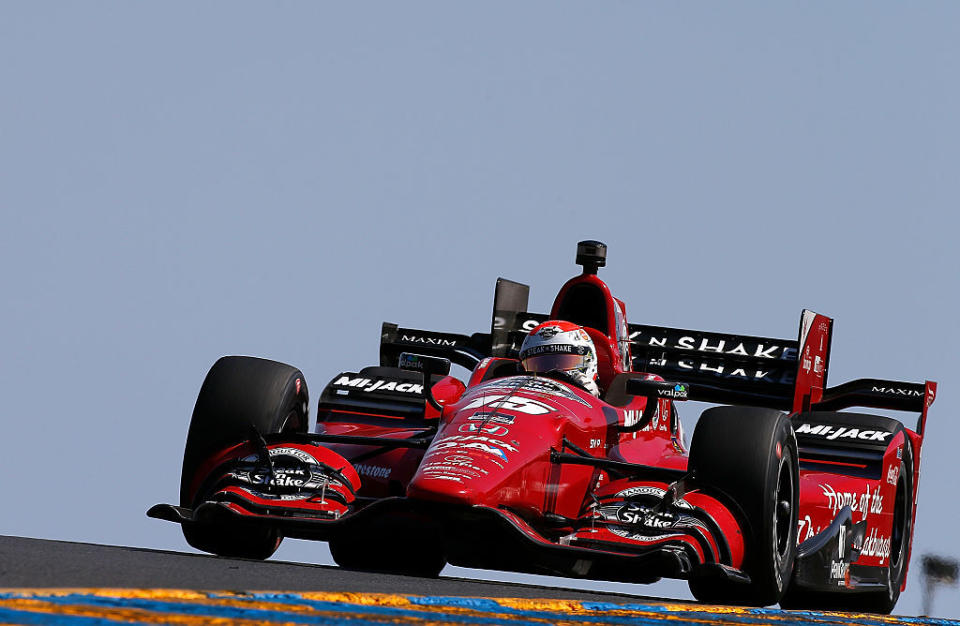
For IndyCar, though, it does. While TV viewership has risen the past few years, it’s fair to say the reasoning behind that rise is the transition from Versus to NBC Sports, and the growth that channel has seen; IndyCar is merely a beneficiary of the station’s success. As for ABC’s live telecast of the Indy 500—once the most important race in all of motorsports—the viewership numbers today are some of the lowest seen since the race was first televised live back in 1986.
Simply put, the marketing division might have you believe otherwise, but things aren’t improving much in Speedway, Ind. And something has to be done.
In fairness, the racing isn’t bad; IndyCar’s road course events are far more competitive than F1’s. And the action at the 500 in recent years has been stellar. But if the product is so great, where are all the fans?
The answer is that viewers simply don’t care anymore—sure, there are still plenty of diehard fans that have Rick Mears as their screensaver, but millennials aren’t interested in circuit racing; they want brash, fast paced, bite-sized action—something auto racing seldom delivers. (There’s a reason Global Rallycross has seen such a rise.) Even NASCAR’s popularity is dwindling, which makes IndyCar’s ascent from the ashes even more improbable.
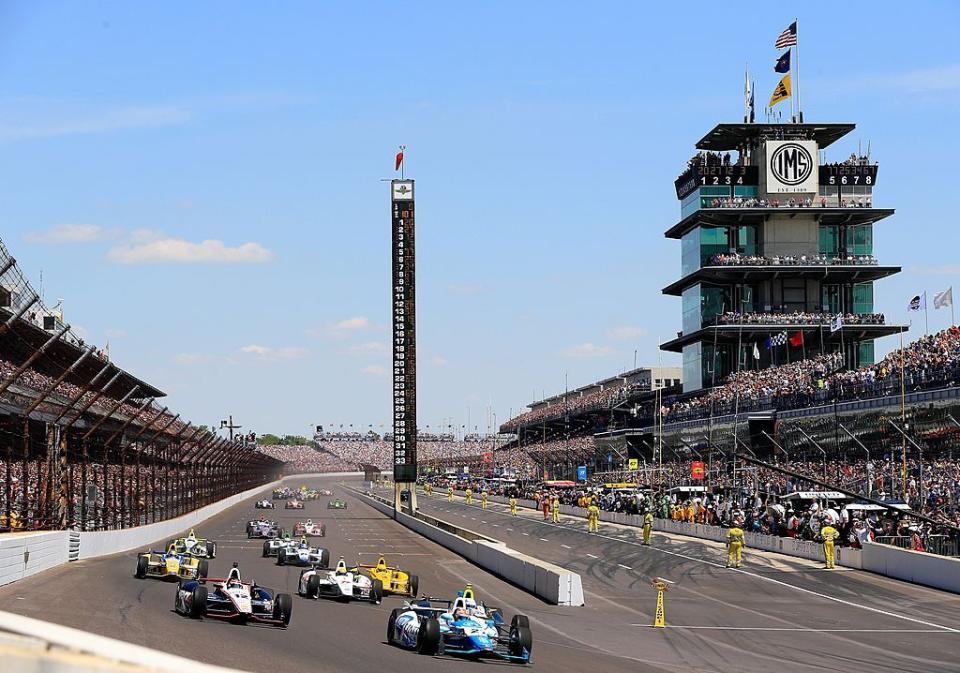
But giving up isn’t an option; after all, the Indy 500 is still one of the world’s biggest sporting events (watch the race in person and it makes even the Super Bowl feel insignificant, at least on the surface). Better marketing and sponsor promotion is key, but that probably won’t happen; IndyCar is trying to run a profitable business (something it didn’t do in the Tony George era) and so splurging its own cash isn’t an option. And the cost for companies to sponsor an IndyCar is too great to include lavish marketing campaigns to run parallel (a presenting sponsor is likely paying upwards of $6-8 million per season; Global Rallycross costs up to $2 million, and the viewership is roughly the same). Besides Verizon, which as the series’ title sponsor may be its best hope since IZOD, there’s only so much you can do when your hands are tied. And so the time has come to revolutionize the formula.
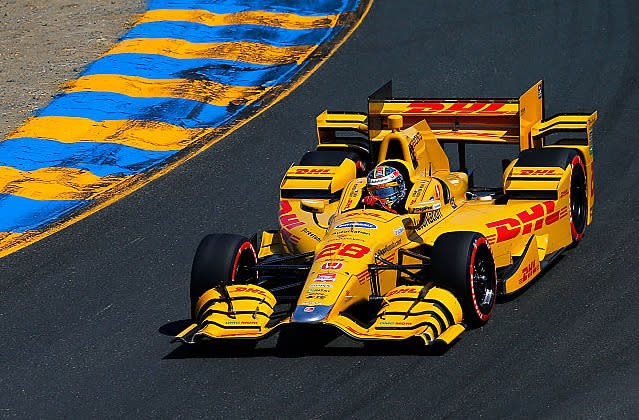
Right now IndyCar is investing in high-downforce “aerokits,” making the cars faster and differentiating the two manufacturers involved (Chevrolet and Honda). These kits are expensive, they don’t look particularly impressive, and they do nothing to attract a new audience. It’s a way to say: “Hey, we’re bringing innovation back to the Speedway,” where in reality, adding many winglets is not innovation; real innovation as notable as turbine-power and the rear-engine revolution will never return. It can’t. It’s too expensive to design and build something so unique (just ask Nissan with its failed Le Mans prototype), and innovations today (like paying for coffee by scanning your phone) are more discreet—the casual fan won’t appreciate the technology.
So stop trying to achieve something that simply isn’t possible in today’s climate.
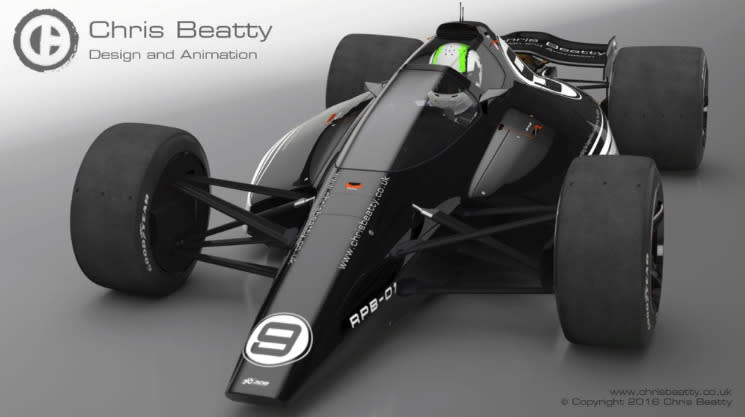
Something like Chris Beatty’s concept is perfect for IndyCar. The lack of wings (or at least far more inefficient wings) would make for unbelievably close road course racing, the likes of which we’ve probably never seen. Up the power from the 750-hp we see today to around 1,000-hp, and adopt far wider, stickier slick tires for added grip. Make the side pods functional aerodynamic “tunnels,” and create downforce via a monster rear diffuser that won’t significantly upset the air it leaves behind. While we’re at it, revert back to steel brakes so as stopping distances increase, and thus out braking a rival is easier to accomplish. This will still make the cars corner well (albeit considerably slower than today), but the neck-and-neck racing could allow for thrilling sprint races to occur on a Saturday before the main event, or even multiple split heats like you get in rallycross. You couldn’t do that now, as even IndyCar’s races are too processional.
Oddly, for the ovals, this may not be the best solution. Rather, it’s a great solution (reduce grip, add power) but the result would be speeds that pale in comparison to today. That can’t happen, as people watch the Indy 500 for its 230+ mph madness. So, let’s buck the trend and make the conceptual oval package boast more downforce than the conceptual road course package.
Compared to the cars we have now, the additional power and a similar (if fractionally less) oval downforce could result in record speeds, and drivers would have to wrestle the machine every lap to extract the maximum (something they seldom do today). This would eliminate pack racing, where drivers are all flat out inches apart, like we saw at Fontana last year—the type of racing that has proven to kill.
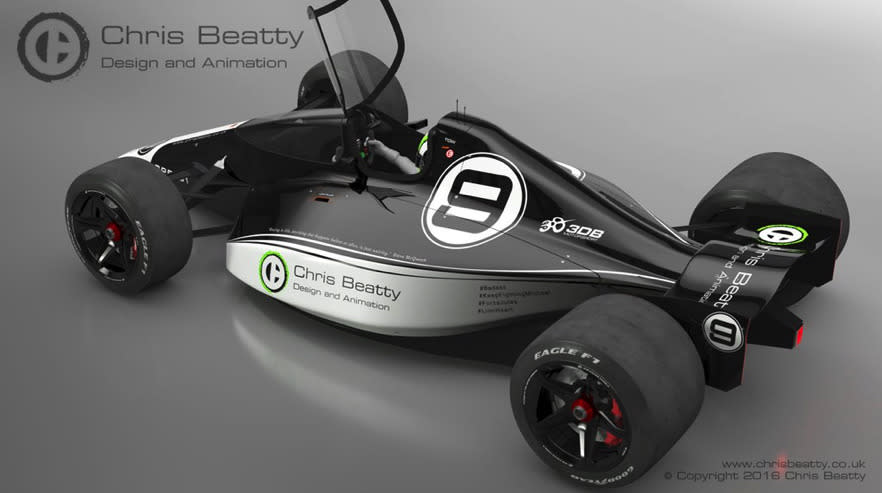
Plus, Beatty’s concept has a canopy, something I truly hope will be implemented in the coming years. Sure, there’s the oven-like temperatures that would need to be resolved, along with the evacuation plan if a car is upside down and on fire—and the visual difficulties presented with such a concave transparent surface. But we can’t have drivers dying by tearing through a debris field at 200 mph, something that happened last year with Justin Wilson and will happen again unless something is done to mitigate the problem. (F1 is looking to a “halo” system, more like a roll cage to ward off larger pieces of debris, but they don’t drive through mangled metal like IndyCar regularly does on an oval, where—thanks to the protective fencing—the debris contains itself right where the drivers’ exposed heads are.)

I’m not saying adopting a car like this concept will solve all of IndyCar’s problems. It won’t. But you can’t keep pushing forward, doing nothing but making a few gimmicky adjustments, and expect the world to take notice. At Indy, make the cars faster on the straight, and slightly slower in the turns—just enough to go after track records. These speeds will ensure the people (and the media) pay attention. Make the drivers work, and give them better solutions to keep them safe.
On the road course, screw cornering speed—fans won’t care. With the additional power, remove the giant wings that prevent overtaking—a monumental change accomplished by a newly designed machine (not cheap, I know). Make the action thrilling in a way we’ve never seen it; spec racing doesn’t sound too bad if 30 cars are slicing and dicing for position every lap.
You can’t go half way, or adopt the changes incrementally. You have to go all in, to revolutionize racing by stepping backwards—understanding that millennials don’t think the way the way traditional race fans do. Thus, we must fundamentally change the way we think. Because the rest of the world already has.

 Yahoo Autos
Yahoo Autos 